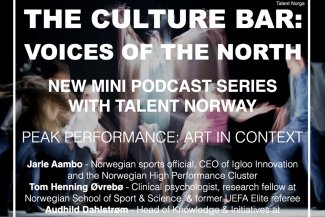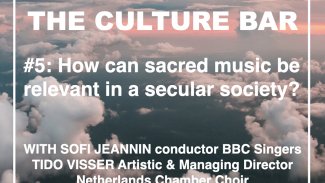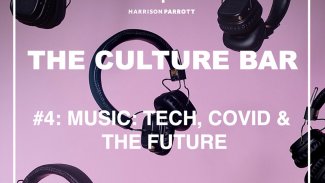The Culture Bar: Voices of the North — Peak Performance: Art in Context
15/12/2020

Voices of the North
We are delighted to share with you our new podcast mini-series ‘Voices of the North’ made in collaboration with Talent Norway. In this series we will introduce you to some of the finest talents and rising stars of the North and bring you the voices of cultural and artistic leaders of Scandinavia.
In our first episode we explore ‘Peak Performance: Art in Context’. In today’s society, the arts are constantly being tested and challenged. Many art forms are affected by local restrictions and government regulations, and performers may be limited or even prohibited from practising and performing. Others may seek alternative ways of sharing and expressing their art. How can the art sector respond and react to these and others societal challenges? What can society do to help artists through these challenging times? And what can we do on a communal level? How can we help artists achieve their best and facilitate an environment that promotes peak performance? And what can an individual artist do to get through these challenging times while still being able to stimulate their performance and creativity?
To help us answer these important questions we are joined by three special guests:
- Jarle Aambo (Norwegian sports official, CEO of Igloo Innovation and the Norwegian High Performance Cluster)
- Tom Henning Øvrebø (clinical psychologist, research fellow at the Norwegian School of Sport Science and former UEFA Elite referee)
- Audhild Dahlstrøm (Head of Knowledge and Initiatives at SpareBank 1 Nord-Norge and board member of Talent Norway)
Hosted by HarrisonParrott’s Karoline Melstveit.
Voices of the North is a part of the agreement and collaboration between Talent Norge and SpareBank 1 Nord-Norge, Samfunnsløftet. Together they ensure that exceptional talents have access to artistic support programs where they live.
Find us on Spotify, iTunes, Google Podcasts, YouTube, Podbean, Deezer and all good podcatcher sites.
#theculturebar #voicesofthenorth
A special thank you to Robert Cochrane as the composer of the theme tune music, and Merlyn Thomas our editor.


